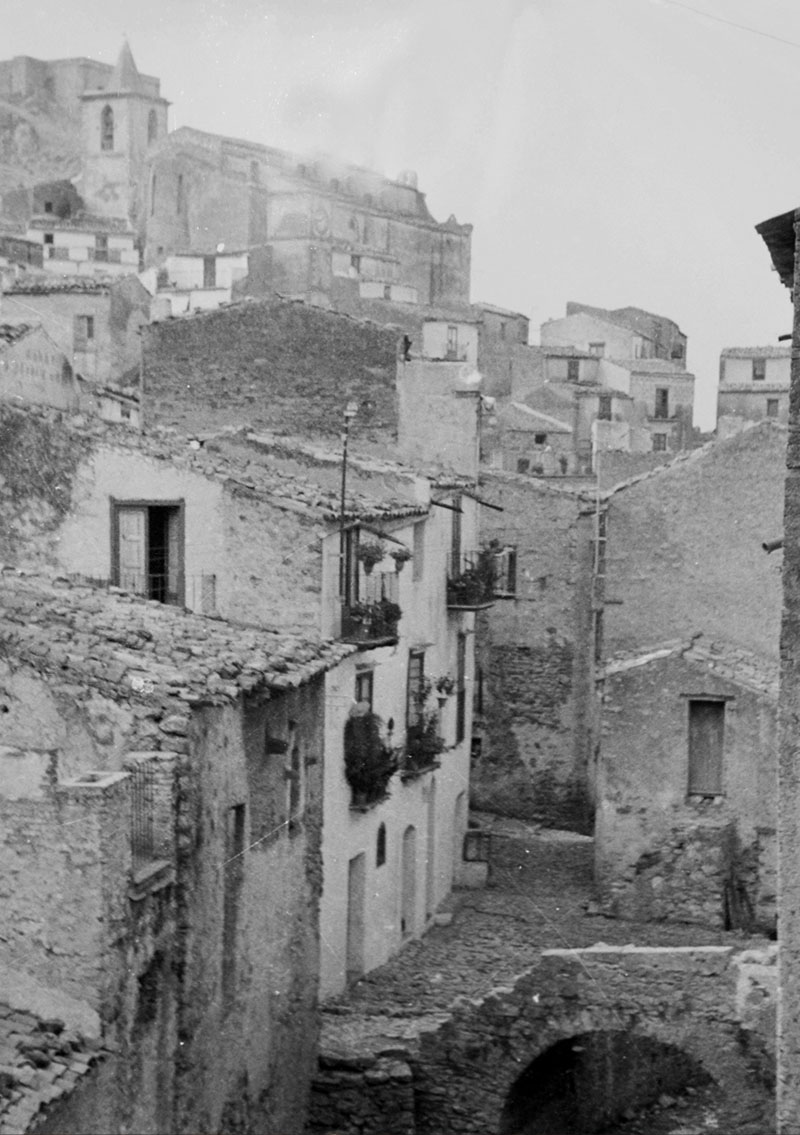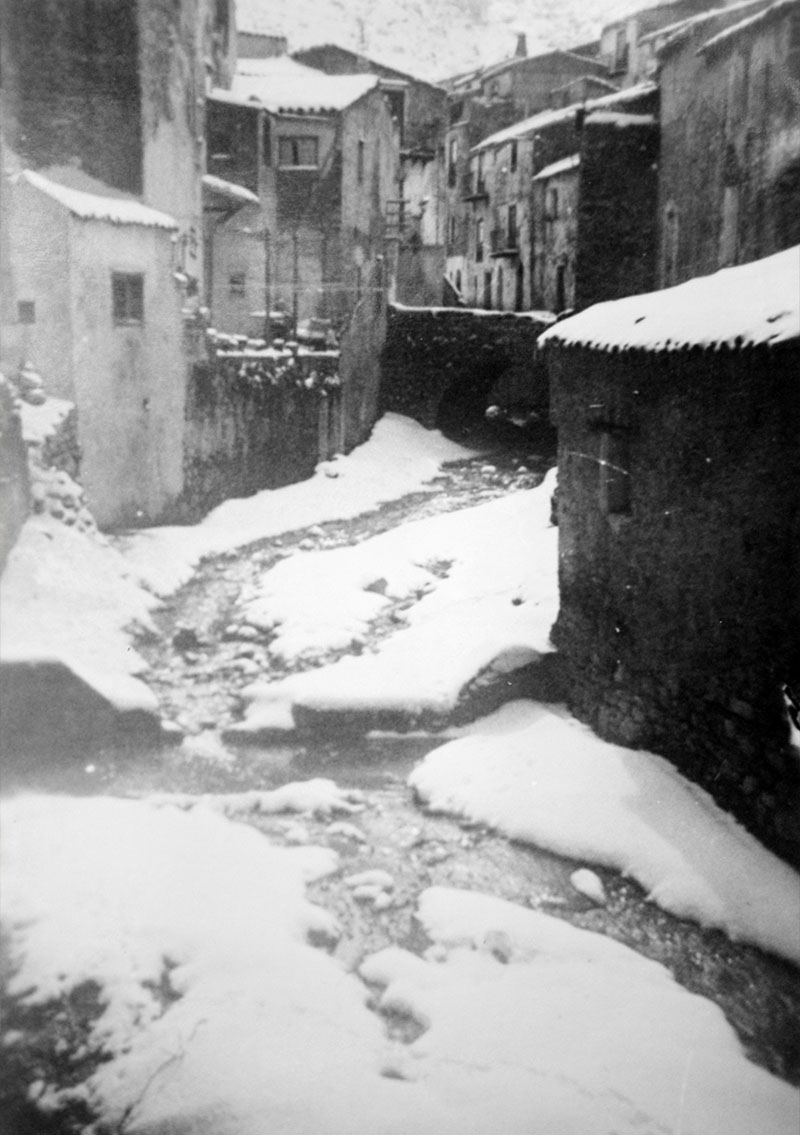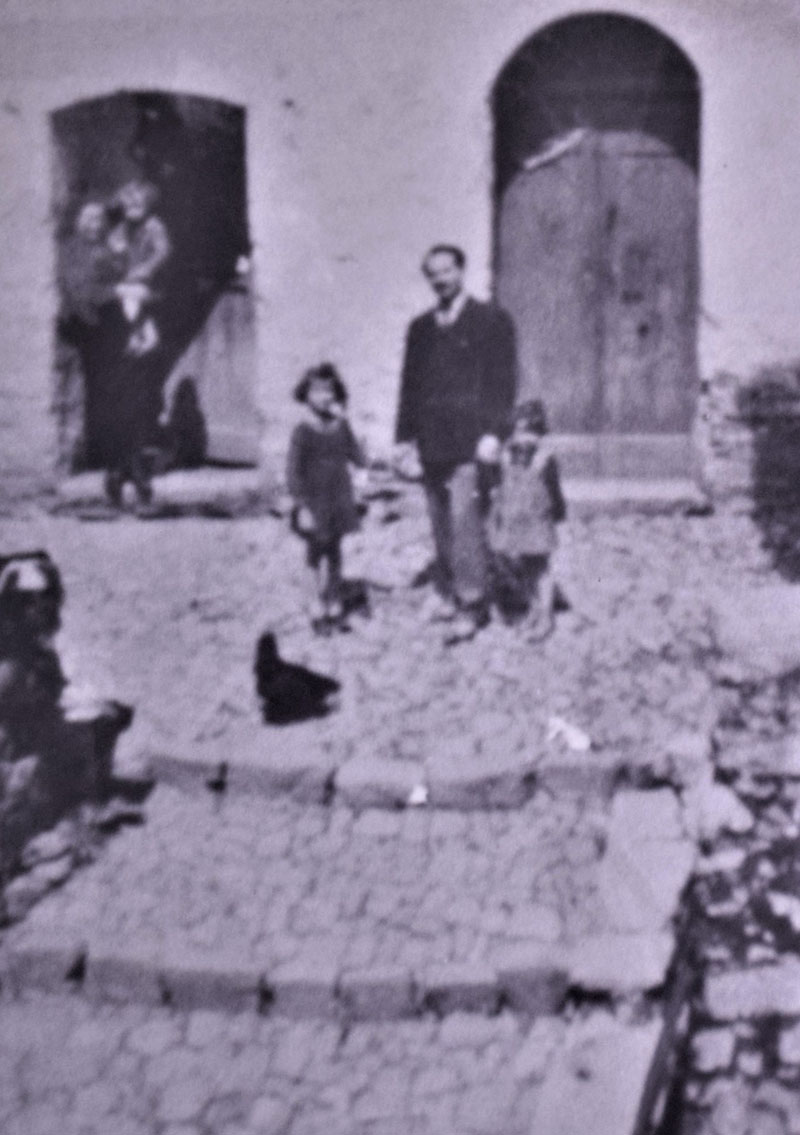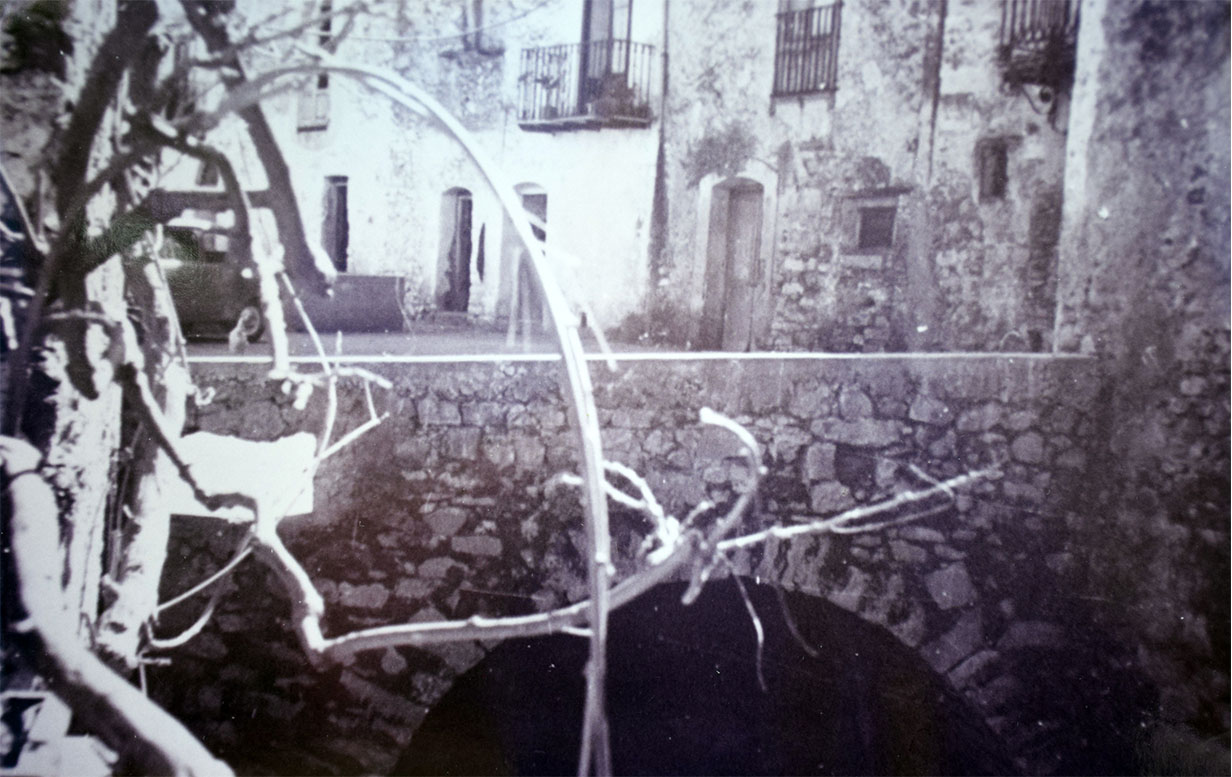Ponte di Mezzo or Ponte di Fantina
It allowed the crossing of the stream in the middle part of the passage, on the border of the town walls. Today it is called Via Fantina.
M°Angelino Polizzi di anni 20, Margarita sua muglieri, rivelano la mita di una casa a la strata di lo ponti di inmezzo in questa terra conf. a la casa di Brancato di Brucato et di Salvaturi Culotta (Archivio di Stato-Palermo, Riveli Tribunale Real Patrimonio, V. 1166, anno 1584).
This bridge was also called “di Fantina”, as it was originally named after the people who lived in that district: in this case, Fantina from Infantina, an ancient medieval female figure. Many of those nominal particularities of the past centuries, indeed, have fallen into disuse today, as for instance “Fata”, one of the most common female names of Gratteri of the XVI century:
Veronica Cirrincione relitta del quondam Paulo di Pollina rende ogni anno t. 3 sopra la sua casa existente nella contrata d’Infantina” (Archivio Parrocchiale di Gratteri, Libro delle rendite della Ven.le Chiesa di San Leonardo, Proc.re Don Filippo Di Fatta, anno 1694-95).
M° Andrea di Fatta capo di casa di anni 42, Marina sua moglie, rivelano una casa existenti in questa terra di gratteri nella ruga di Fantina (Archivio di Stato-Palermo, Riveli Tribunale Real Patrimonio, V. 1166, anno 1584).
Agata Pellerino relitta di Vincenzo Pellerino rivela una mita di una casa existenti nella q.ta de la fontana di Fantina conf. con li casi di li heredi di Ludovico Pizuto di prezzo di unzi sei (Archivio di Stato-Palermo, Riveli Tribunale Real Patrimonio, V. 1170, anno 1616).
In correspondence with the Fantina alley -called in the XVI century “la Ruga di Fantina”- there was a medieval tank with a fountain, used in the past as a shaft, until it was buried during the renovation of the new steps of Via Fantina. About those times there remain only some vain memories crystallized in the popular sayings of the good farmer: “Quannu fuma Fantina, nchiuiti uogliu, furmientu e farina” ( when the shaft of Fantina exhales a dense warmth, prepare for the winter and stock up on oil, wheat and flour).






